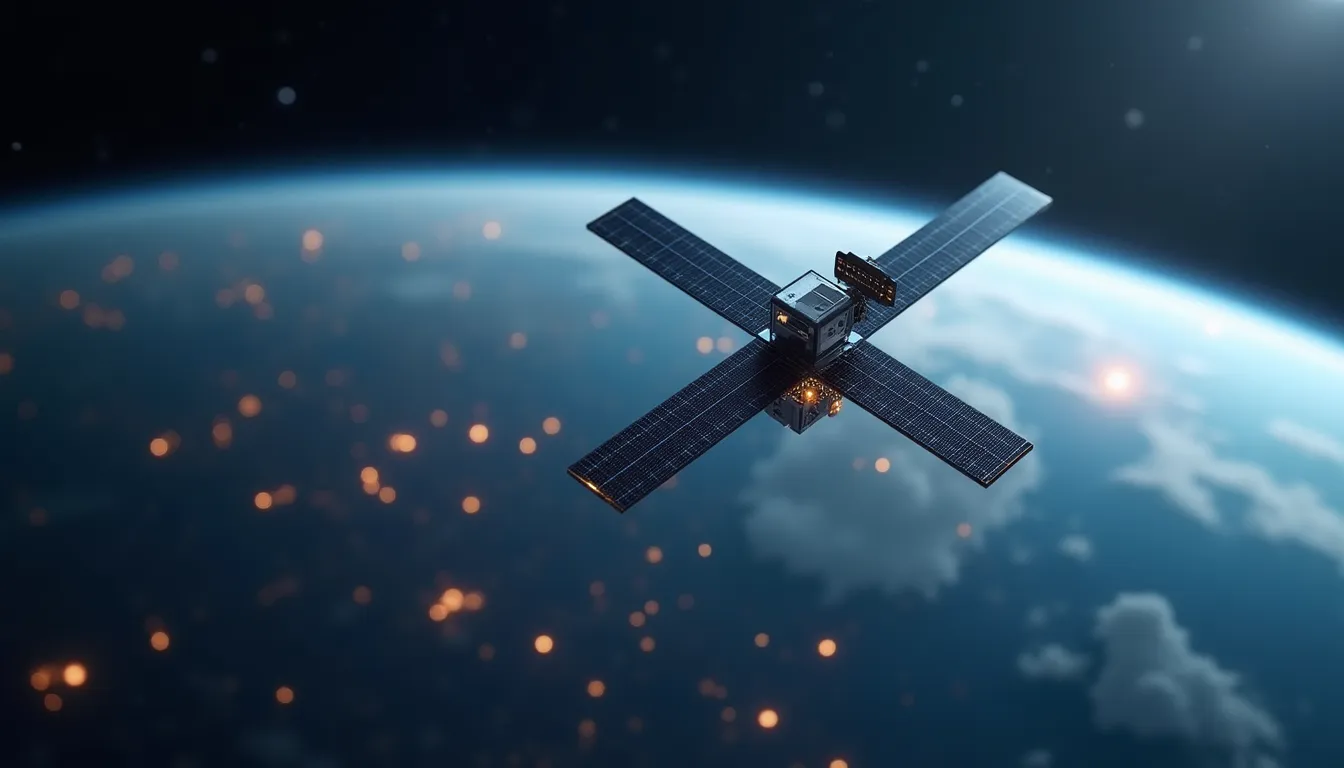Recent developments in the satellite sector underscore the transformative impact of advanced technologies across aerospace, defense, and commercial applications. This article examines significant advancements in Earth observation, military capabilities, and space weather monitoring, highlighting the technologies that are shaping the future of satellite operations.
Earth Observation and Weather Forecasting
The European Space Agency (ESA) has made a significant leap forward in meteorological forecasting with the selection of the WIVERN satellite mission. Developed by the University of Reading, WIVERN is designed to enhance our understanding of severe weather phenomena by utilizing a dual-polarization, conically scanning 94 GHz Doppler radar. This sophisticated radar system will scan an impressive 800 km swath of Earth’s surface, allowing it to measure critical parameters such as wind movements, precipitation types—including rain, snow, and ice—and contribute vital data to climate records.
ESA’s decision to fund the WIVERN mission reflects a growing recognition of the need for bold initiatives in Earth science. The insights garnered from this mission are expected to improve forecasting accuracy for severe storms, thereby potentially saving lives and property in the face of natural disasters.
In a complementary move, the National Oceanic and Atmospheric Administration (NOAA) has awarded a substantial $24.3 million contract to PlanetiQ, marking the largest single purchase of commercial satellite weather data to date. This investment will significantly enhance meteorological forecasting capabilities, leveraging satellite-derived data to provide timely and accurate weather predictions.
Defense and Military Satellite Developments
The U.S. Space Force is making remarkable strides in its satellite and launch programs, with the Space Development Agency recently launching the first 21 satellites of its “Tranche One” architecture. This constellation is designed to provide missile warning, tactical communications, and continuous surveillance of adversary movements in space. The overarching goal is to create a network of over 150 satellites, enhancing resilience against space-based threats and denying adversaries first-mover advantages.
According to General Chance Saltzman, Chief of Space Operations, “The rapid development and deployment of our satellite architecture is essential to maintaining our competitive edge in space.” This sentiment is echoed in the record launch activity seen in 2025, which includes the inaugural flight of the Vulcan rocket and increased commercial launches through Space Force facilities.
Additionally, the SILENT BARKER system, which has recently been operationalized, provides enhanced domain awareness in collaboration with the National Reconnaissance Office (NRO). This system integrates advanced satellite technologies for real-time monitoring of the space environment, crucial for national security.
The FORGE missile warning system is also nearing operational acceptance, aiming to deliver improved target tracking and cyber-resilience capabilities. With these advancements, the U.S. is positioning itself to respond effectively to evolving threats in the space domain.
Commercial and Technology Satellite Updates
On the commercial front, SpaceX continues to expand its Starlink satellite constellation, launching 28 satellites via a Falcon 9 rocket from Cape Canaveral on September 17, 2025. This move is part of SpaceX’s broader mission to provide global broadband coverage, leveraging advanced satellite technologies to connect remote and underserved regions.
Furthermore, the W-Cube satellite, equipped with cutting-edge radio beacon technology developed by VTT, successfully concluded a four-year mission in Earth orbit in mid-September 2025. This mission validated new frequency technologies for satellite communications, showcasing the potential for high-performance precision accelerometers and advanced navigation systems in enhancing satellite functionalities.
Space Weather Monitoring for Exploration Missions
As humanity prepares for deeper space exploration, NASA’s Artemis II mission, scheduled for no later than April 2026, will incorporate space weather monitoring components to protect astronauts from high-energy solar particles. The mission will employ advanced forecasting and monitoring systems, ensuring astronaut safety during lunar and potential Mars missions. This critical capability highlights the importance of developing high-precision fiber optic sensing coils and other advanced navigation technologies to mitigate risks associated with space travel.
Conclusion
The advancements in satellite technology are not only revolutionizing Earth observation and defense capabilities but also paving the way for future exploration missions. As organizations like ESA, NOAA, and the U.S. Space Force invest in innovative satellite systems, the implications for climate science, national security, and human exploration of space are profound. The integration of advanced technologies, such as precision accelerometers and navigation systems, will continue to enhance our capabilities in understanding and exploring our planet and beyond. Moving forward, the satellite industry is poised to play a crucial role in addressing global challenges and advancing humanity’s reach into the cosmos.
References
-
The W-Cube satellite, equipped with VTT’s cutting-edge technology, concludes its four-year successful mission in Earth’s orbit (news.cision.com) - 9/25/2025 Operational phase until mid-September 2025. A radio beacon based on VTT’s state-of-the-art technology. Validated that the new frequency …
-
Month: September 2025 (spaceflightnow.com) - 9/25/2025 SpaceX launches 28 Starlink satellites on Falcon 9 rocket from Cape Canaveral · September 17, 2025 Will Robinson-Smith.
-
New satellite set to improve forecasting of severe storms (www.meteorologicaltechnologyinternational.com) - 9/24/2025 A satellite mission developed by a scientist at the University of Reading is set to improve forecasts of severe storms and hazardous weather …
-
Remarks by CSO Gen. Chance Saltzman at the 2025 Air and Space Forces Association’s Air, Sp (www.spaceforce.mil) - 9/24/2025 Remarks by CSO Gen. Chance Saltzman at the 2025 Air and Space Forces Association’s Air, Space and Cyber Conference. Published Sept. 23, 2025 …
-
Artemis II Science and Technology News Conference (Sept. 23, 2025) (www.youtube.com) - 9/24/2025 … space travel. Artemis II is scheduled for no later than April 2026. In this news conference, leaders in the Artemis program and Science …
-
Top Stories for the week of September 19, 2025 - Via Satellite (www.satellitetoday.com) - 9/20/2025 Government/Military | September 16, 2025 PlanetiQ Wins NOAA’s Largest Single Commercial Satellite Weather Data Purchase to Date The National …



